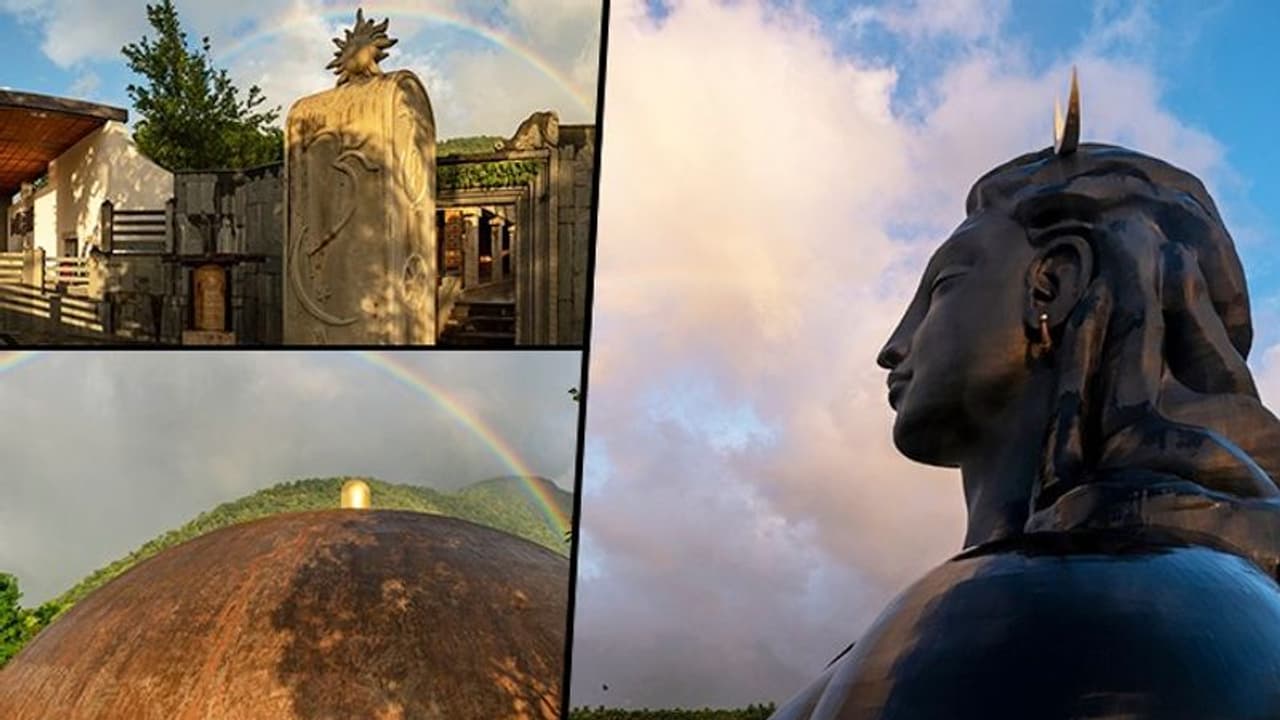Here are some of the spectacular pictures from the Isha Yoga Center in Tamil Nadu where a stunning rainbow shined around the iconic face of “Adiyogi” who is the Source of Yoga
New Delhi: Monsoon has its own beauty. Shravana, the first month of the season gains much importance as it heralds the onset and is indicated by a three-star constellation (nakshatra). The classic “Chitrasutra” (the treatise on paintings) provides a description to depict the rains – overcast sky, clouds weighed with water, flashes of lightning, rainbow, animals taking shelter, white cranes flying in rows. This led to famous miniature monsoon paintings centred on Radha and Krishna in the series called Raagmala (garland of ragas) and Baramahsa (12 seasons) commissioned in different courts.
With a global pandemic looming over the world, a sense of gloom has dawned upon us. All the activities have taken a hit, economies are shrinking and there is a psychological blow that humans are enduring in these times of crisis. But as humans are under a lockdown, the nature is shining in its full glory. Here are some of the spectacular pictures from the Isha Yoga Center in Tamil Nadu where a stunning rainbow shined around the iconic face of “Adiyogi” who is the Source of Yoga.
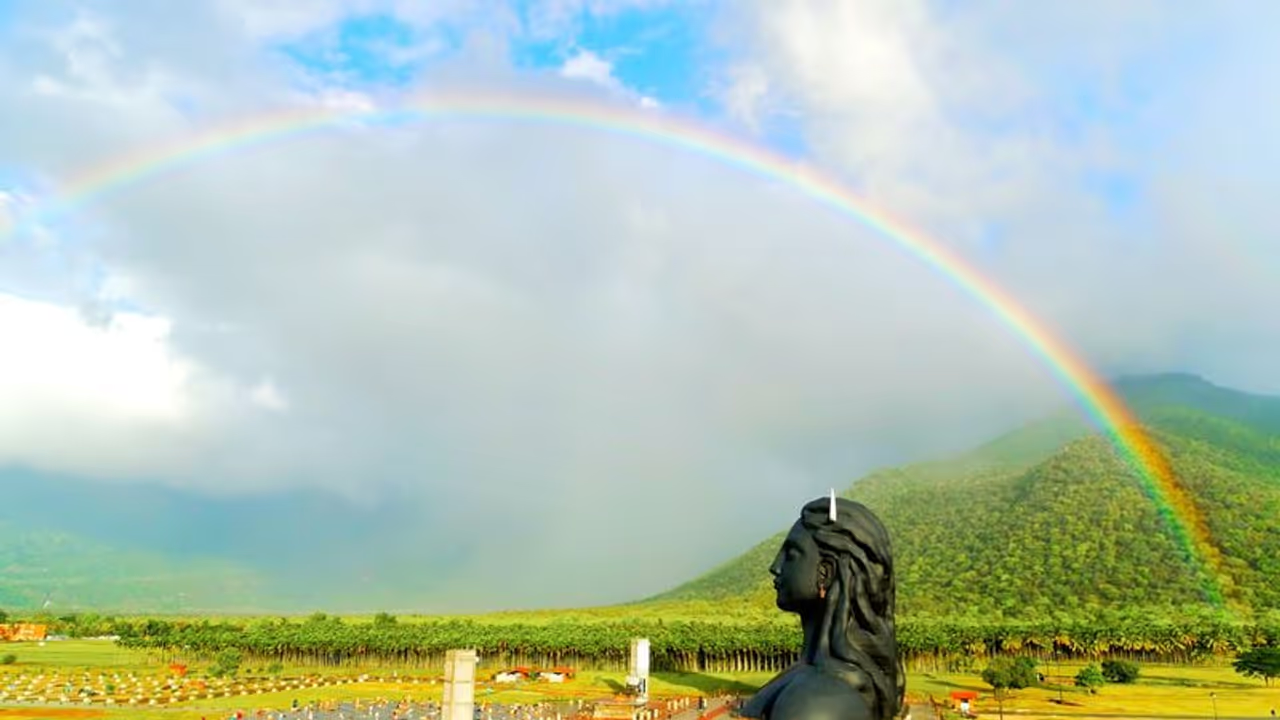
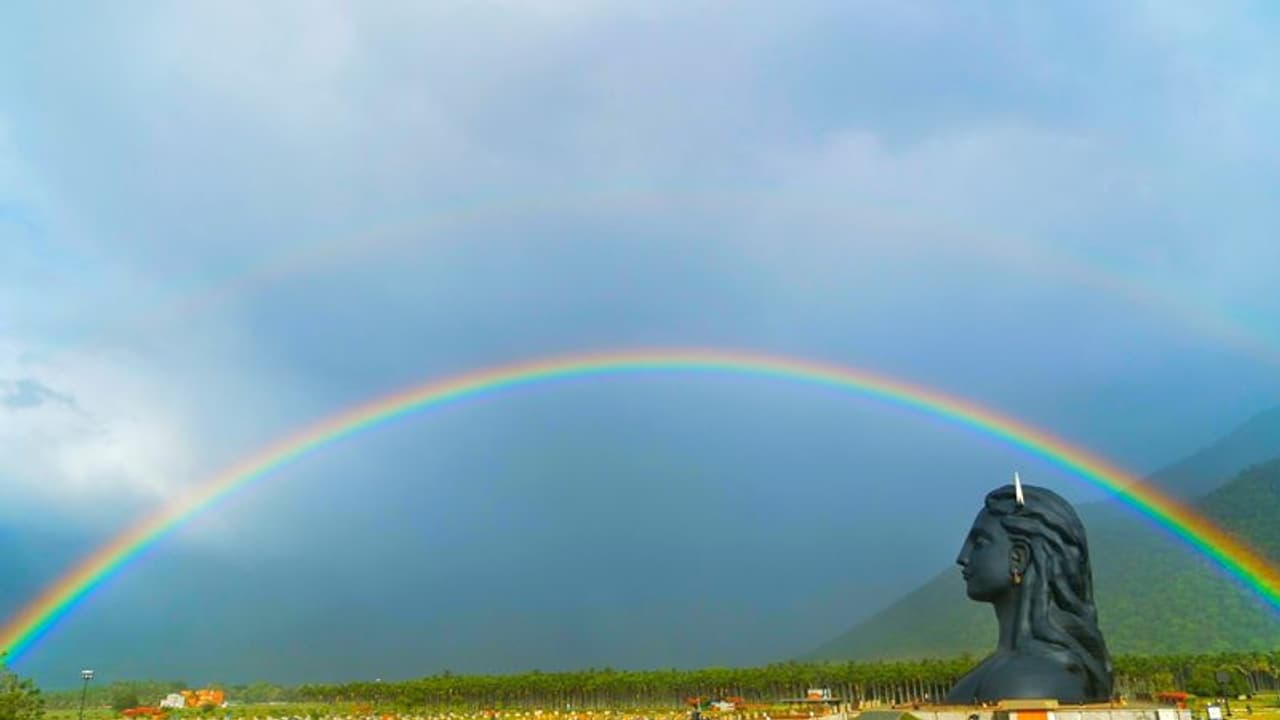
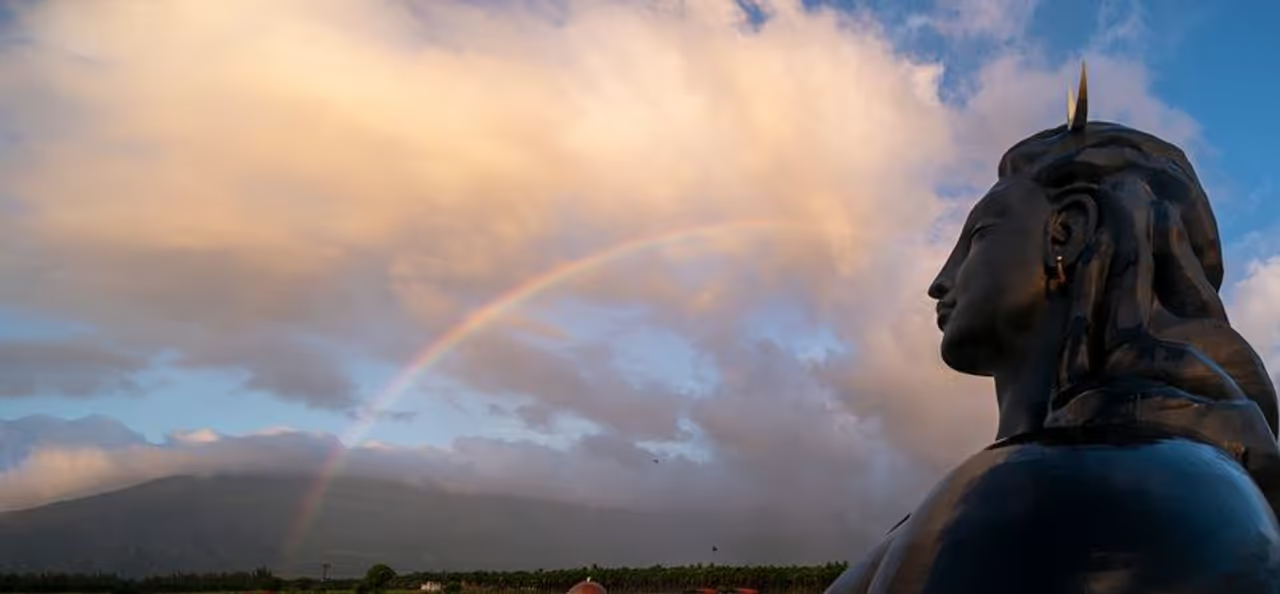
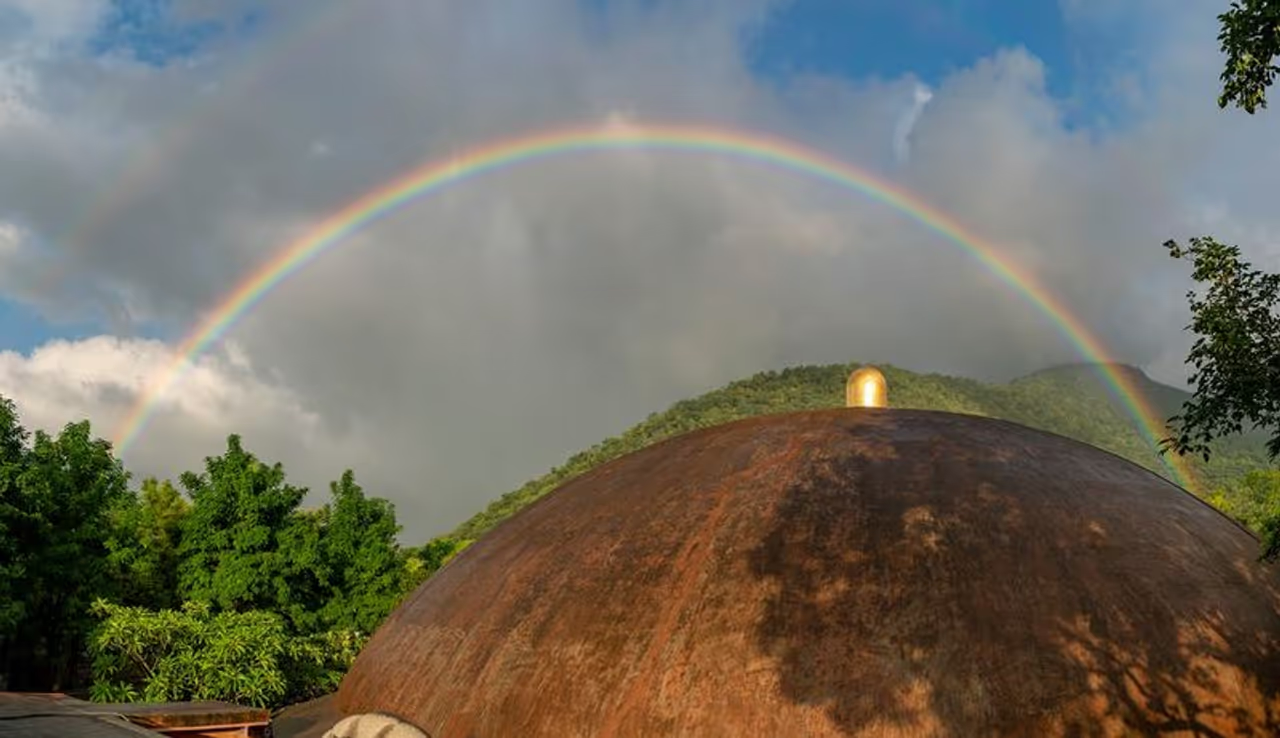
Recognised as the world’s largest bust sculpture by the Guinness World Records, the face of Adiyogi is 112 feet high, represents the 112 ways he offered for one to attain to wellbeing and one's Ultimate nature.
The iconic face of Adiyogi was unveiled by Prime Minister Narendra Modi in 2017 and has since become a major landmark and tourist spot for people from around the world.
In this picture, the spectacular 7-coloured double rainbow is seen in the background of Dhayanalinga, which is a profound meditative space that does not ascribe to any particular belief or faith, and requires no ritual, prayer or worship.
It is a visual treat to see nature greeting us with these colourful gifts in these challenging times. As Sadhguru rightly puts it, “Of all the struggles of Humans, of Pandemics, Economy, Security and so on. The Glory of Creation goes on.”
A rainbow is caused by sunlight hitting water droplets in the air. We typically see a rainbow in the sky opposite the sun after or during a rain shower. When light enters a raindrop, it’s refracted, or bent. Then the light is reflected from the drop in such a way that the white light breaks into its separate wavelengths and we see a spectrum of colors. If the light left the water droplet at 180 degrees, it’d head straight back toward the sun. With a rainbow angle of 138 degrees, the light is traveling in a direction somewhat, but not directly, back toward the sun. That direction of travel by the light explains why we always see rainbows when the sun is behind us.
The sunlight emerges from many raindrops at once. The combined effect is a mosaic of light, spread out in an arc in the sky. But that’s not the end of the story. When sky conditions and your vantage point are perfect, the rain and sun work together in this way to create a complete ring of light – a circle rainbow. We’ll never see this from Earth’s surface because our horizon gets in the way.
The early Greeks had a more fanciful – but very beautiful – explanation for rainbows. They believed that Iris, the Greek goddess of the rainbow, could fly at the speed of the wind from one end of the Earth to the other. As she flew, she left an arc of colors trailing in her wake.
Since ancient times the season is reflected in a world of myths, symbols, metaphors which in turn inspire festivities, rituals, and creative expressions evident in poetry, music, dance, and painting and is perceived to be a cultural cosmic multimedia called Varsha Ritu. The Parijanya and Aap Sukta (Rigveda verses) are recited to propitiate the rains in an appropriate degree, and the season itself is about rejoicing, retreating, meditating, and fasting.
